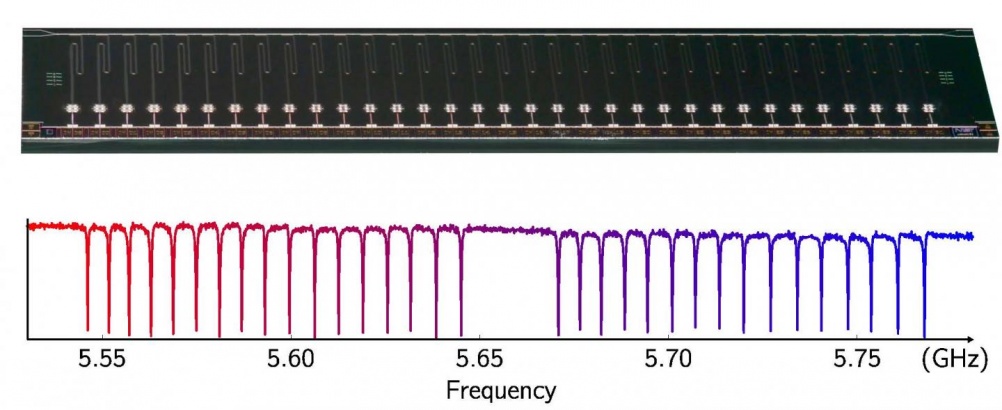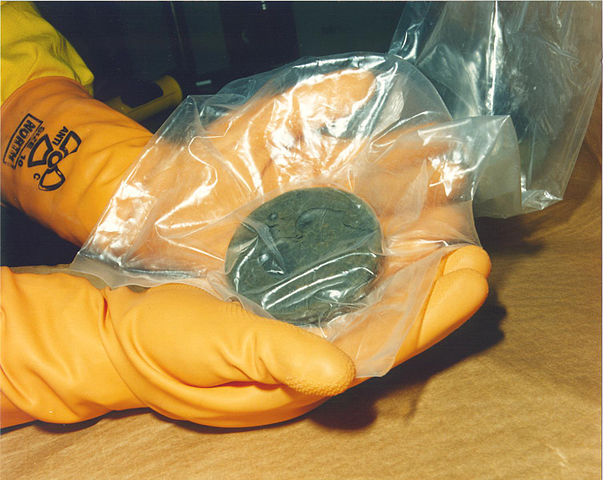
A 33-channel SQUID multiplexer chip (20 mm x 4 mm) along with its microwave response showing the associated resonances (Credit: J.A.B. Mates, University of Colorado)
The device, described in Applied Physics Letters, consists of 128 superconducting sensors. Up until now, array size has been restricted by the bandwidth available to combine signals into a limited number of output channels. But the researchers, from the University of Colorado and the National Institute of Standards and Technology (NIST), were able to deliver a 100-fold bandwidth improvement.
The breakthrough was achieved by using extremely cold superconducting microwave circuitry and superconducting quantum interference device amplifiers, or SQUIDs. The device uses radiofrequency SQUIDs to regulate high-quality microwave resonators, improving the intensity of small signals. When these resonators are coupled to a common microwave feed line, with each resonator tuned to a different frequency, all sensors can be simultaneously monitored.
"It's as if one were trying to listen to hundreds of radio stations at one time, through one radio receiver," said lead author Ben Mates from the University of Colorado.
The device is capable of detecting signals over a wide range of radio frequencies, from short-wavelength gamma or X-rays to long-wavelength microwaves. Gamma ray detection is important for monitoring plutonium in spent nuclear fuel. Just 8-10kg of plutonium is required to build a nuclear weapon, so accurate accounting of spent nuclear material is paramount. Current methods use mass spectrometry, but the researchers claim the new device could do the job both faster and more accurately.

A button of plutonium processed at the Savannah River Site (Credit: United States DOE)
A different version of the device could also be used to study the long-wave microwaves of cosmic background radiation. This ‘relic radiation’ from the early universe is mostly uniform, but small fluctuations in its intensity and polarisation do exist. By examining the variations in more detail, the researchers believe astronomers could be able to build a more accurate picture of the universe’s early stages.
Although the device outlined in the paper contains 128 sensors, the researchers say work will now focus on increasing the array size, with future versions potentially using more than 1,000 sensors.




Poll: Should the UK’s railways be renationalised?
I've been watching some of the TV interviews with some level of incredulity. I do recall that the last time this was mooted the cost was in the region...